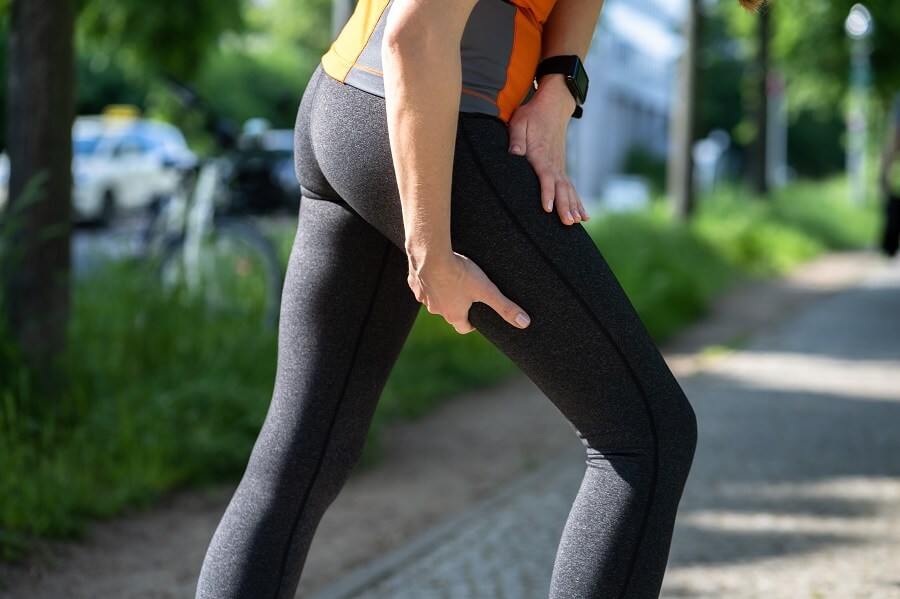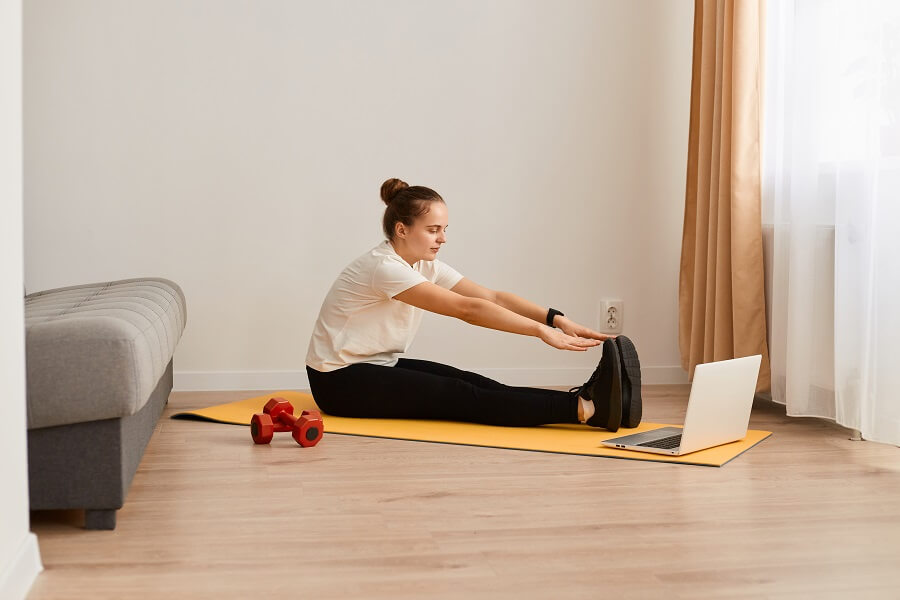What Do Tight Hamstrings Mean?
Posted by Eileen Durfee on 23rd May 2022
 Whether you're an athlete, someone that works out a few times per week, or an average Joe, it's always important that you learn to listen to your body.
Whether you're an athlete, someone that works out a few times per week, or an average Joe, it's always important that you learn to listen to your body.
Your body gives you signs that you might need some physical therapy or treatments. When your hamstrings begin acting up, it could happen for several reasons.
Tight hamstrings are damaging to your health and can lead to other nagging injuries. Keep reading to learn more about the root causes of hamstring injuries and what you can do about them.
1. You Tore or Strained Your Hamstring
The first thing to confirm is whether or not you've sustained an actual hamstring injury. This typically happens during physical activity in the form of a pull, strain, or tear.
With a Grade 1 hamstring strain, you might just have tightness, soreness, or a slight pull. With a Grade 2 hamstring injury, you'll have some form of bruising or swelling. This is considered a partial hamstring tear.
Grade 3 refers to a complete hamstring tear, which is severe and may come with a pop at the time of the injury.
2. Your Workout Needed More of a Warmup
You will definitely experience tightness in your hamstrings if you didn't properly warm up prior to exercise. Treat this warm-up time as a necessity and not a formality that you skip or handle lazily.
Always give yourself between 5 minutes and 15 minutes to warm up prior to a workout. Your warm-up should include extensive stretching, calisthenics, and a light jog.
Taking the time to warm your body up gets the blood pumping and puts your body in a mode to exert and be resilient throughout the course of physical activity. The key is to break a light sweat without burning yourself out too much before exercise.
3. It Could Point to a Repetitive Use Injury
Several people experience hamstring tightness due to some sort of repetitive use injury. These injuries happen when you're taxing your muscles and muscle groups in the same way over and over again.
Carpal tunnel syndrome is one of the most common examples of repetitive use injuries. By typing, tightening, gripping, or otherwise using the muscles in your hands, fingers, and wrist bones, you will develop pain and strain that becomes pesky and chronic.
The same thing can happen with your hamstrings if you're constantly climbing, stomping, or otherwise activating your hamstring muscles. This can easily create a repetitive tightness or twitching in your hamstrings that can irk you in your daily life.
If you work out on a regular basis, you should use rest days and alternate the muscle groups that you train, so that you don't run into these injuries.
4. The Hamstring is Weak
You will also experience tightness in your hamstring if it has been weakened. Your hamstring could be weak because you're out of shape or if you've been living a sedentary life.
When the hamstring muscle becomes fatigued it will tighten up on you and become an irritant. This is why staying in peak physical shape will help you with your durability and longevity.
5. Hip Flexors Could Be Too Tight
It's also possible to feel tension in your hamstrings whenever your hip flexors are tight. If your hips are always too tight, it can cause pelvic tilt, which will lead to tight hamstrings.
In many situations, the doctor or physical therapist will check on your hips and other muscle groups to see which is the root cause.
6. You've Been Spending Too Much Time Sitting Down

Several people today are wrecking their bodies by sitting down for too long each day. This is easy for people to do living a sedentary lifestyle and working in an office building for hours on end.
Sitting down for too long is one of the worst things you can do for your overall health, as it weakens your body's muscle tone and also creates muscular holding patterns.
When you're constantly sitting and cramped up, you will naturally lose some range of motion in your legs. This limited range of motion will shorten your hamstring muscles and cause them to stretch tightly when in use.
If you work in an office, plan breaks throughout the day to stand up and walk around. Better yet, install a standing desk so that you can get the same amount of work done while staying on your feet.
People that use stand-up desks find that they even become more productive since sitting reduces blood circulation and cognitive function.
7. Your Body is Misaligned Due to Poor Posture
When you don't observe proper posture, your spine and body will eventually become misaligned. This creates awkwardness in the way that you stand and walk, which will put undue pressure on your muscle groups.
The end result is that you might feel swelling and tightness in your hamstrings and knees.
8. Chronic Back Pain Issues
About 4 million Australians experienced back pain issues in a single calendar year recently.
These back pain issues, particularly in the lower back, can also lead to hamstring tightness and pain. When your back is always sending sharp pains throughout your body, you're training your muscles to tense up in anticipation.
This constant, never-ending muscle contraction can weaken your back and cause other muscle groups to overcompensate. When your hamstrings are forced to overcompensate, you will quickly begin to experience tightness and pain.
9. You May Have Lost Some Tissue Length
Several hamstring tightness issues come about due to losing tissue. People might lose tissue length due to aging, genetics, or prior injuries.
When a hamstring muscle becomes shortened, it will always feel stretched thin -- particularly with heavy and consistent use. This will lead to constant tightness and soreness that you experience each day.
10. Dehydration
Finally, several people experience tight pinching in their hamstrings due to dehydration. A pull in your hamstring is one of the most common forms of dehydration. The pulling that you feel is actually the muscle cramping up. The best thing you can do to prevent this is to hydrate several times throughout the day.
Give your body time to acclimate to this water intake, rather than trying to load up on water right before activity. Get plenty of electrolytes and stay away from foods and drinks that dehydrate you. Add Healthy Salt into your diet daily to boost your body's hydration levels and replace essential minerals and nutrients.
How to Fix your Tight Hamstrings
So what can you do to fix tight hamstrings as they come about? There are some tried and true tips that'll help you out:
1. Stretch Every Single Day

Make stretching a lifestyle, and not just something that you do as part of your warm-up. When you stretch multiple times per day for several hours per day, you're giving yourself the best chance to stay warm and protect yourself from injuries.
You should stretch out your legs and back as soon as you wake up and before you go to bed at night. Your body will more naturally become nimble and limber, which will protect your muscles and make you more athletic.
Soak in a Himalayan pink salt bath so that you can soothe your muscles after a long workout or stretching session. Put a foam roller or other stretching tool to use as well so that you can make your hamstrings more flexible as a whole.
2. Practice Yoga on a Regular Basis
If you really want to become flexible, practice yoga on a regular basis. Yoga is a workout that makes your body more elastic and strong at the same time.
You'll stretch your body in a variety of yoga positions, while also building muscle endurance by holding the poses. This also improves your blood circulation, which will heal your muscles and prevent inflammation.
3. Hire Professional Massage Therapy and Sauna Treatments
Hire professionals to help you make your body more loose and limber. You can accomplish this with a variety of massage sessions and spa treatments.
Jumping in an infrared sauna is one of the best forms of therapy you can use to heal your pain and inflammation. Shop the portable and affordable Sauna Fix system to see which set is right for you. Practice combining yoga or another form of exercise with sauna therapy for additional benefits. You can jump in a cold tub at the end of a workout to instantly circulate blood and get rid of swelling in your legs and total body.
Work Through Your Hamstring Issues
When you have tight hamstrings, the tips in this article will help you work through them.
Wellness Shopping Online would be happy to help you out with all of your health and wellness needs. Take the time to contact us via our site or call us up at (888) 932-2526.
